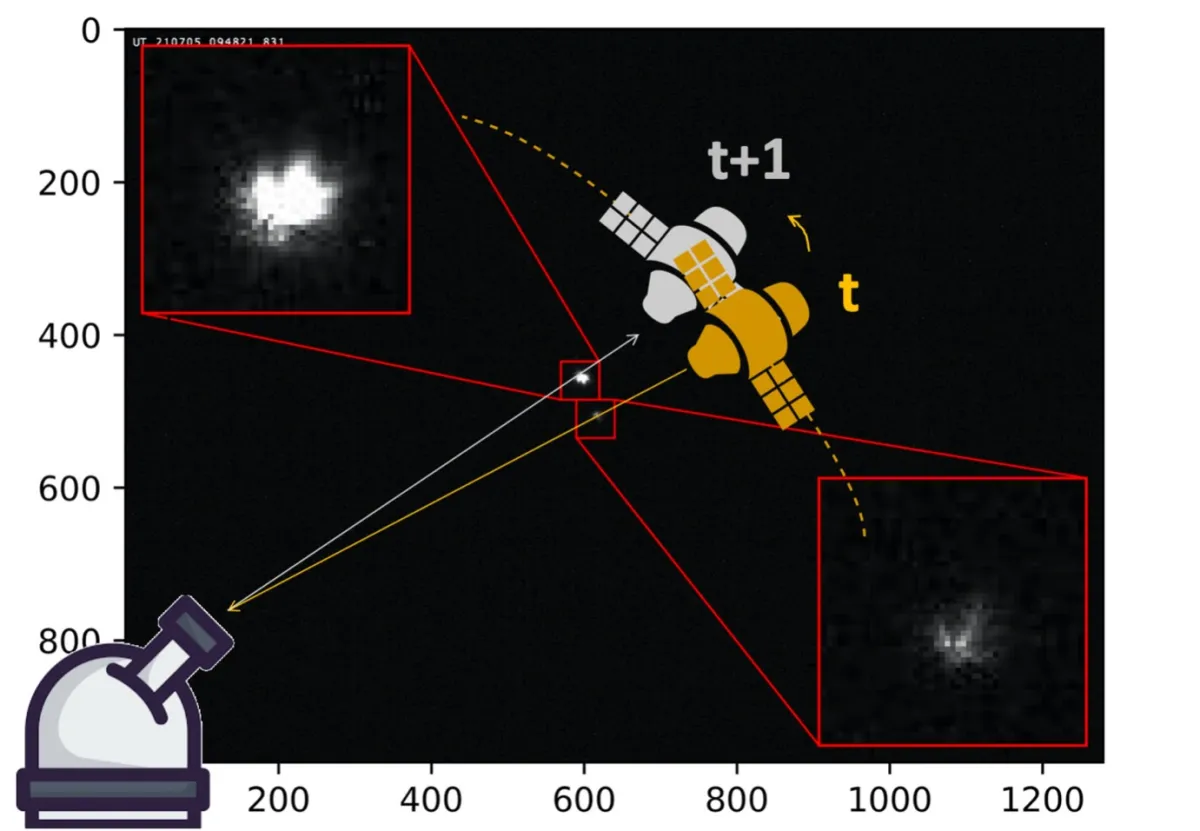Double stars observations at Mount Stromlo Observatory for satellite laser communications
The aim of this research is to determine the correlation of the tip-tilt to confirm that the downlink can be used as a reliable reference source for adaptive optics applied to the uplink signal.
Research themes
Content navigation
About

Free space optical communications from the ground to space and vice versa are affected by atmospheric turbulence; typically, adaptive optics are implemented to correct for the resulting signal errors. Adaptive optics uses laser guide stars as a reference signal for the wavefront signal, with the exception of tip-tilt, which up to date cannot be measured reliably with artificial stars. Proposed solutions utilise the downlink signal (sent from satellite to ground station) as a reference source with which the tip-tilt in the uplink signal would be pre-compensated. However, the point ahead angle due to the orbital motion of the satellites results in the bi-directional signals propagating through different regions of the atmosphere. Due to the atmospheric anisoplanatism, there is a degree of tip-tilt decorrelation between the laser links.
The aim of this research is to determine the correlation of the tip-tilt to confirm that the downlink can be used as a reliable reference source for adaptive optics applied to the uplink signal. The student will use observational data of double stars captured at Mount Stromlo Observatory at different elevations and separations to obtain statistics of the atmospheric tip-tilt.
This project is a scientific collaboration with the European Space Agency and Durham University. The student will have the opportunity to work with experts in the field of atmospheric modelling and optical communications not only at the ANU Advanced Instrumentation and Technology Centre, but worldwide.
REQUIRED SKILLS:
Undergraduate and postgraduate students are encouraged to contact the project team and inquire about current and potential research projects. Prior experience in at least two of the following disciplines is required: physics, optics/optical engineering, system engineering, space engineering, instrumentation, laser systems, control systems, computer science. Students with science communication experience and/or prior experience bringing the arts and science together within STEAM initiatives (STEAM=Science Technology Engineering Arts Mathematics) are also encouraged and welcome to inquire about possible projects.

